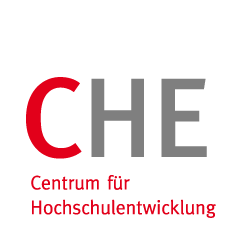 Bild: Pixabay
Bild: PixabayWhen it comes to technology transfer from science to business, other countries are ahead of Germany. This is the result of an analysis of international ranking data by the CHE Centre for Higher Education as part of the DUZ Spotlight series in the current issue of DUZ magazine. Germany does not rank among the top three OECD members in any of the nine transfer indicators. The example of Japan shows that government transfer agencies such as DATI can contribute to successful knowledge transfer.
Germany not in the top 3 OECD members for any transfer indicator
Although Germany is still considered a leading economic nation and a strong innovator, the country only just breaks into the top 10 in international innovation rankings. Germany was ranked 8th in the Global Innovation Index 2022 and 9th in the European Innovation Scoreboard EIS 2022.
An analysis conducted by the CHE Centre for Higher Education now confirms this trend. For a feature in the DUZ Spotlight series, Isabel Roessler analysed the results of 1,545 higher education institutions (HEIs) from the U-Multirank international university ranking. This involved assessing the results for nine indicators that can be used to identify successful transfer activities. Examples of these nine indicators include external funding from private donors, the student-patent ratio, and the number of new companies founded by graduates of the HEI.
The analysis used university data to assess, among other things, how many of the transfer indicators a country ranked in the top 3. The leading country in this respect is Israel, with two top 1 and two top 3 rankings, followed by Japan and the USA. In contrast, Germany does not appear in the top 3 for any of the nine transfer indicators.

Diagram: The forerunners
The diagram shows the number of transfer indicators for which each country is in the top 3. It also shows the number of transfer indicators for which the country ranked first. A total of nine transfer indicators were analysed. Only OECD countries were included.
Japan among the best performers
In only three of these nine indicators is Germany above the OECD average. In addition, the above-average results of the majority of the country’s HEIs were analysed to see to what extent individual outstanding universities distort the country’s results.
In the CHE evaluation, Japan stands out in particular, along with Israel, Switzerland, the USA, Canada, France, Belgium and Korea. In contrast to Germany, where the establishment of a German Agency for Transfer and Innovation (DATI) has only just begun, Japan’s two funding agencies can look back on a long history. They also receive a comparatively large amount of funding. The Japan Science and Technology Agency (JST) budget alone is equivalent to around €1.4 billion in 2023. The bulk of the budget goes to JST’s funding programmes.
Government transfer agencies can make an important contribution
“The example of Japan, as well as other countries with above-average success, shows that national government transfer agencies can, but do not necessarily have to, play their part in successful knowledge transfer from universities,” commented the Third Mission expert at CHE. “In Japan, HEIs across the country benefit from strong financial support, with many funding opportunities for university-industry collaborations and the prospect of increased funding for research in the humanities and social sciences,” explained Roessler.
In light of the German government’s plans to establish a German Agency for Transfer and Innovation (DATI), Roessler believes that the focus should be on a broad range of topics, sufficient funding, and a long-term concept that will outlast future government coalitions.
Unlike existing agencies, DATI will be open to all institutions: from universities of applied sciences and universities to non-university research institutions, companies from start-ups to large corporations, foundations, associations and federations. DATIpilot, a kind of real-world laboratory for the real DATI, has now been launched.
The topic was addressed in the 11/2023 issue of DUZ on 17 November. The authors were Isabel Roessler and Gero Federkeil. The dossier “Transferstrukturen – Die Rolle von nationalen Agenturen beim Transfer aus Hochschulen” (Transfer structures – The role of national agencies in knowledge transfer from universities) is the 13th issue of the “DUZ Spotlight – Gute Praxis international” format, developed collaboratively by CHE and DUZ, which is published every now and then in DUZ and at www.che.de.
Previous issues of the Spotlight Dossier have explored the Austrian model of the lifelong student ID (09/2017 issue), the British professional doctorate (01/2018), the Dutch University Teaching Qualification (08/18), the transfer community based on the Swiss model (12/2018), the establishment of academic continuing education certificates in Switzerland (11/2019), instructional designers in university operations (02/2020), learning spaces of the future (08/2020), social innovation on campus (11/2020), the recruitment of international doctoral researchers (06/2021), fair rules for access to higher education (09/21), international medicine degree programmes in Southeast Europe (02/22), innovative IT training models (11/22), the academisation of therapy professions (2/23) and the topic of dropping out of university early (08/23). All publications are available online here.
Transferstrukturen – Die Rolle von nationalen Agenturen beim Transfer aus Hochschulen 17. November 2023 1.15 MB 8298 downloads
Roessler, Isabel; Federkeil; Gero: DUZ Spotlight - Gute Praxis International: Transferstrukturen...
Bildquelle: Pixabay

